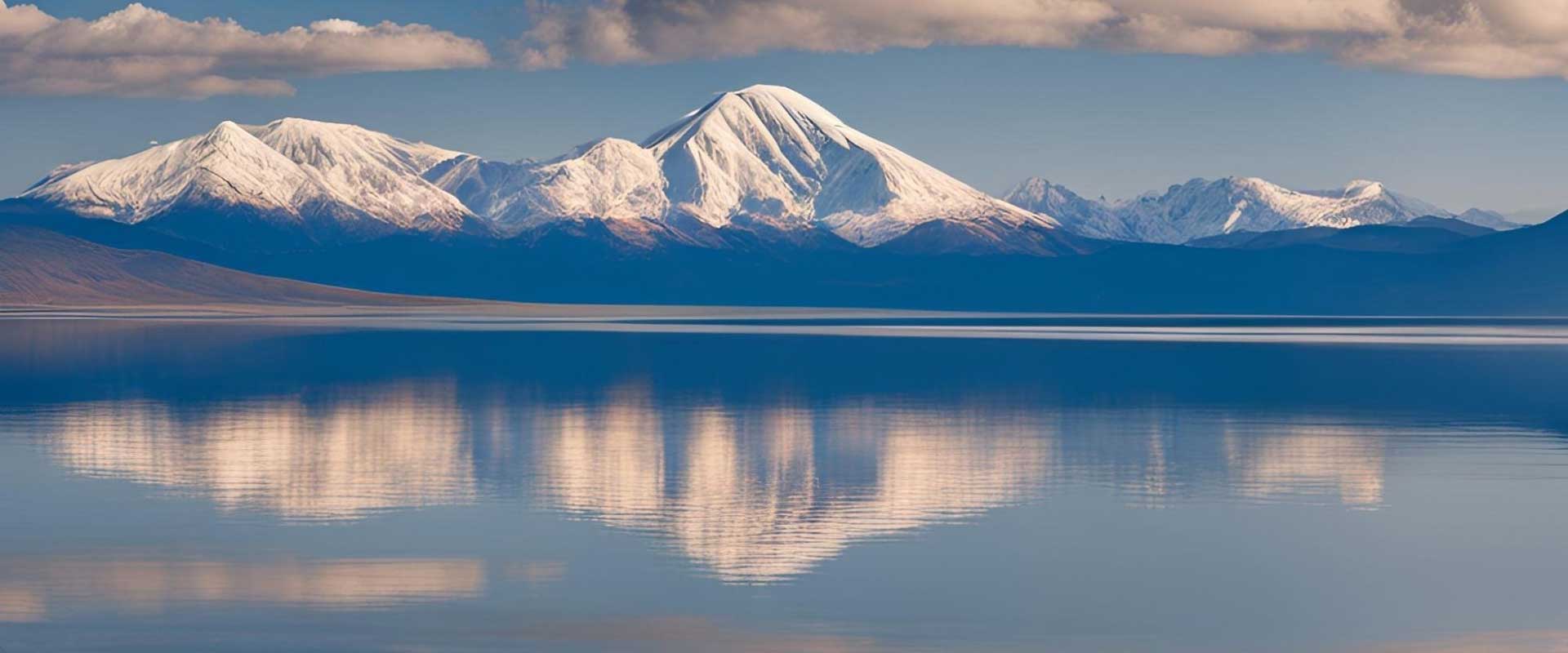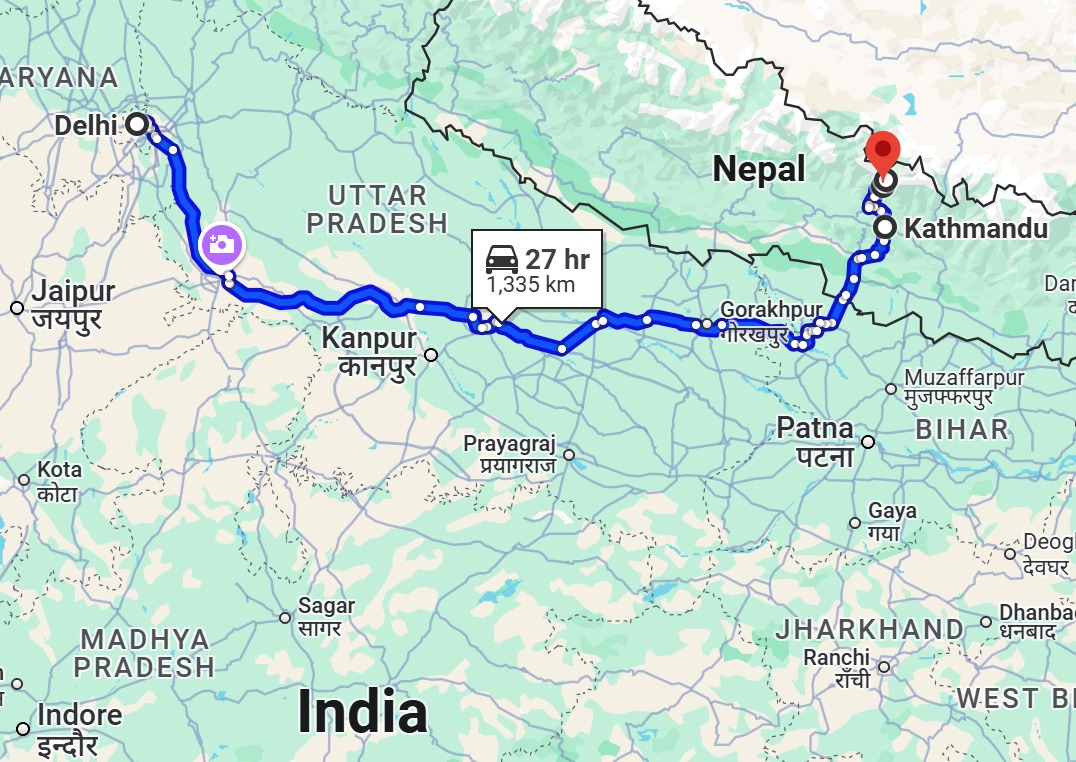- Home
- A&A Tours
- Trip Types
- Tailor Made
- Luxury Train Tour
- Private Jet
- Luxury Hotels
- Luxury Cars
- About Us
- Find My Tour
To More Inquiry


Mount Kailash (also known as Kailāsa in Hinduism and Gang Rinpoche in Tibetan) and the largest freshwater lake, Mansarovar (also known as Manas Sarovar in Hindi and Mapam Yumtso in Tibetan), are located in the far Western Himalayan ranges of the Tibetan Autonomous Region. They provide divine energy and mental peace to humanity. Mount Kailash and Lake Mansarovar are reserved as the most sacred spots in Hindu, Jain, Bodh and Bon religions. Every year throughout the months of April to October a huge number of believers and adventure seekers visit Kailash Mansarovar from all over the world.
Our
agent will greet you when you arrive in Delhi and take you to the hotel that
you have reserved in advance.
Following
breakfast, you will travel past the Red Fort, Chandni Chowk, President House,
Parliament, and other landmarks, including Raj Ghat, Jama Masjid, Qutab Minar,
Humayun's Tomb, and Laxmi Narayan Temple.
Our
representatives will meet you when you get to Kathmandu. They will meet you and
assist you in finding your way to the Kathmandu hotel that you have reserved in
advance. Nepal's largest city and capital is Kathmandu. There is much to see in
this city, which is well-known for its expansive temples, picturesque
surroundings, and lively marketplaces. In the city, you might even go to the
Kathmandu Valley. After arriving at the hotel, you may choose to spend the day
relaxing or later engage in some local sightseeing. Spend the night at the
hotel.
On
your second day with us, we will take you to some of the city's top tourist
destinations after breakfast. Our second day's plans include a visit to
Sleeping Vishnu and the Pashupatinath Temple. The Pashupatinath Temple, which
is situated by the Bagmati River, is where we start our journey. One of the
most well-known Hindu temples in the city is devoted to Lord Pashupatinath, a
Nepali deity who is an embodiment of Lord Shiva, the Hindu god. The translation
of "Pashupatinath" is "Lord of Animals." One of the UNESCO
World Heritage Sites is this temple.
Our
next destination during the day is Budhanilkantha Temple's Sleeping Vishnu. The
temple sits at the northern tip of the Kathmandu Valley, at Budhanilkantha. The
blue throat is the literal translation of the term Budhanilkantha. The statue of
the reclining Lord Vishnu is the main attraction of this temple. The largest
carving in Nepal is this statue, which is located at Budhanilkantha.We will
then assist you in getting back to your hotel. The remainder of the day will be
devoted to getting ready for the yatra, which is scheduled for the third day of
the excursion.
On the third day, we will assist you with hotel check-out after breakfast. We will travel 54 kilometers from Kathmandu to Duche/Syabrubesi or the China-Nepal Border with the assistance of a tourist coach. It would take us six or seven hours to drive. You can take in the breathtaking scenery of the surrounding places as we travel. In order to complete the cross-border formalities, we shall pause at night and wait until the following day.
On
the fourth day, after breakfast, we will assist you in crossing the border
between China and Nepal. After completing the cross-border procedures in the
morning, we will proceed to Kyirong, which is only 35 kilometers from the
border.Kyirong, sometimes known as Kyidrong, is a contented border town. This
Tibetan plateau, which is high in the Himalayas, is well-known for its
vegetation, which is extremely uncommon in Tibet. One of the main factors
making this valley town one of Tibet's most well-known cities is the region's
warm and pleasant climate.
We
will assist you in finding your prearranged lodging in the city once we arrive.
You can rest here or explore the city.Spend the night at the hotel.
Following
breakfast on your seventh day with us, we will assist you in traveling to
Dongba, a small region of China. Dongba is roughly 270 kilometers away. We'll
travel via several locations in Tibet.
Dong and Ba are the two words that makeup Dongba. The term literally translates to "Ba of the East," referring to the Nakhi people of Southwest China, who are the priest's people. Although these priests taught a variety of topics, one of their most significant lessons was the value of harmony between nature and humanity. Additionally, we shall traverse the Brahmaputra River on our way to India. After that, we'll keep driving in the direction of Saga and Dongba.
We
will travel to Chiu Manasarovar Lake the following day. Mapam Yumtso is another
name for the lake. The Kailash Glaciers close to Mount Kailash provide water to
this high-altitude freshwater lake. The Tibet Autonomous Region in China is
home to Mount Kailash, which has been set aside for sacred purposes by a number
of different religions, including Hinduism, Buddhism, and Bon.
We
will also traverse the Mayum La, also called Mariám La, a mountain pass that
leads to Chhongo Lake and Lake Manasarovar on our way to the latter. One of
Tibet's holiest lakes is Lake Manasarovar.
On
the ninth day, we will go to Darchen, which is roughly 60 kilometers away,
after assisting you in seeing a Hawan in Manasarovar. On the beaches of Lake
Manasarovar, the Tibetan crew will erect tents for you to bathe in the morning.
The customary method of bathing is walking around the sacred mountain. We will
assist you in doing the Hawan and Pooja along the shores of Lake Manasarovar
after you have had a bath.
Before we proceed to Darchen, also called Tarchan or Taqin, we will assist you in having lunch here following the Hawan and Pooja. The little village of Darchen is situated in China's Tibet Autonomous Region's Purang County. Lhara was the previous name for this location.
We
will go from Darchen to Darboche, a little town with a few dwellings, on your
tenth day. Since Darboche is a destination for many pilgrims, it is crowded
with guesthouses. We will hike the nine to ten kilometers from Darboche to
Diraphuk. Mount Kailash is to the north of Darboche.
This
is one among the numerous perilous journeys that are part of the sacred
Parikarma of Mouth Kailash. The Dolma-la Pass's highest point, Kora, is reached
by this trek. It would take roughly 10 to 11 hours to finish this walk, which
is roughly twenty to twenty-two kilometers long. The Tibetan name of Lord
Shiva's bride, Goddess Parvati, is the inspiration behind the name of Dolma-la
Pass.
Our
journey will resume on your twelfth day. One of the more difficult treks on our
program is the one we are doing today, from Dolma-la Pass to Zongdo. The
northeastern face of Mount Kailash will be visible as you descend.
We will assist you in driving to Paryang or Dongba, which is just five kilometers away from here after the hike is over.
We'll assist you in getting to Kyirong the following day. It would take us roughly six to seven hours to travel a minimum of 270 kilometers from Zongdo to Kyirong. You can take a nap here or venture out to view the sights and take in Kyirong's lovely weather.
We shall resume our journey to Kathmandu on your fourteenth day. It would take us roughly seven to eight hours to travel the 172 miles from Kyirong to Kathmandu, the capital of Nepal. We will assist you in celebrating a great journey with other Yatris in Kathmandu once we arrive. We will assist you with your overnight hotel stay.
We
will assist you in getting to the airport on your last day with us so you can
catch your journey home.


Immerse yourself in the grandeur of luxury at our exquisite palaces, hotels, resorts and safaris.
1 night, 2 adults
$ 9501 night, 2 adults
$ 8001 night, 2 adults
$ 9001 night, 2 adults
$ 8001 night, 2 adults
$ 7501 night, 2 adults
$ 6001 night, 2 adults
$ 5001 night, 2 adults
$ 4301 night, 2 adults
$ 460